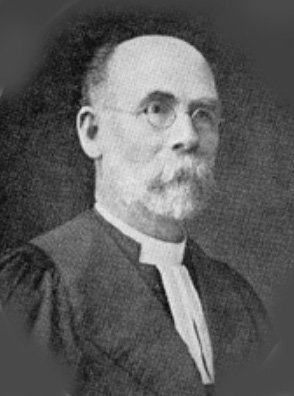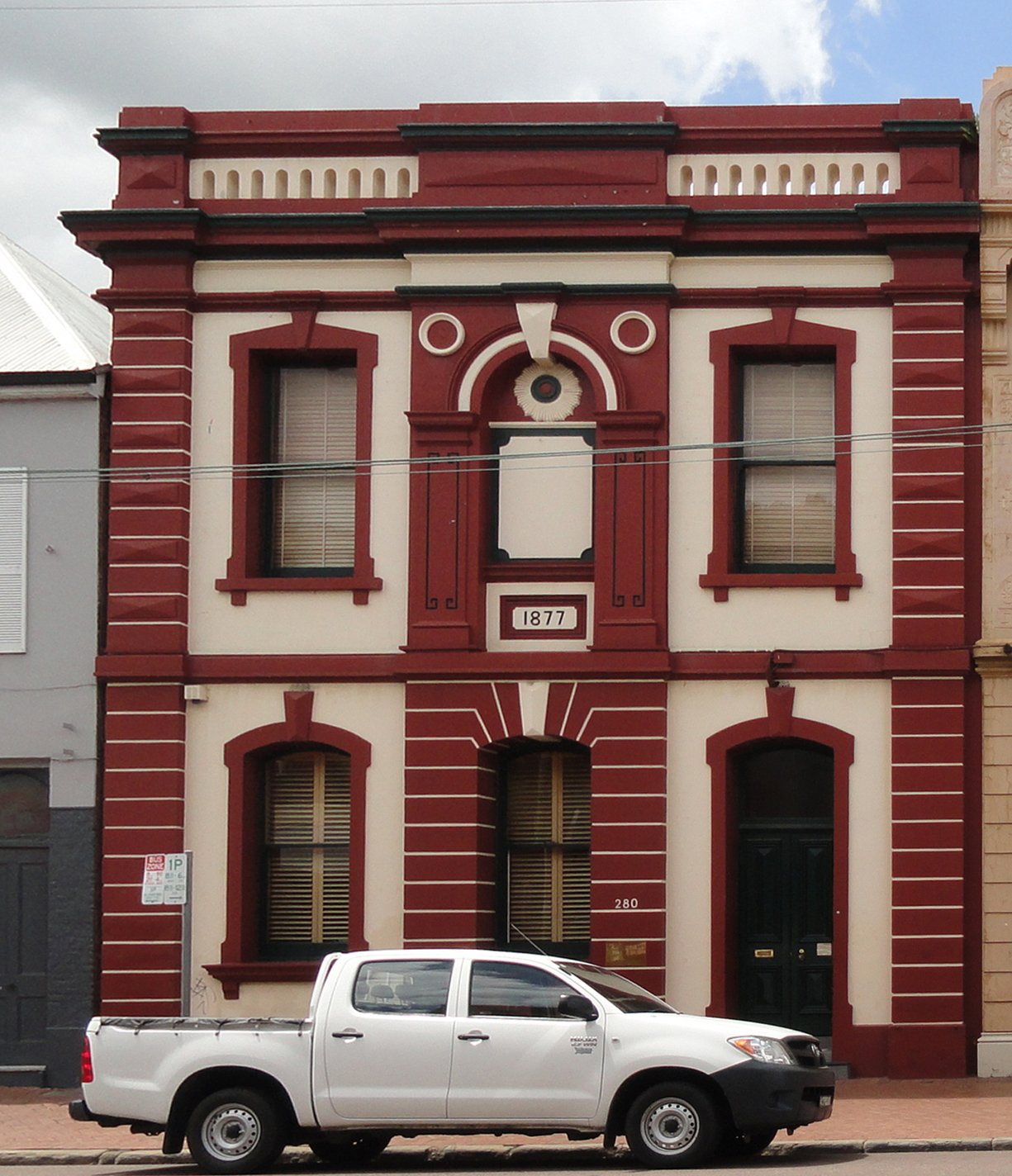Maitland Scientific Society
...it is a homely institution that seeks to nurse infant talent, to quicken thought and to stimulate research in various branches of science, and generally to provide wholesome and useful employment for the leisure hours of many intelligent people in our midst. (Maitland Mercury, 5 March 1887, p 16)
With these words the Maitland Mercury offered its description of the newly formed Maitland Scientific Society (initally called the Microscopical Society). Established in 1887, the Society was very active for its first few years, petered out in the mid to late 1890s, and was wound up in 1907. It was reactivated from 1913 to 1918 as the Maitland Scientific and Historical Research Society.
The rules for the reactivated Society asserted that its object was ‘to render mutual assistance in the study of scientific subjects and in historical research’.
Rules of the Maitland District Scientific and Historical Research Society (front cover), T Dimmock, 1913.
(Maitland City Library)
A digitised copy of the full booklet is available on the Collections Maitland website.
The organisation was a product and reflection of its times. In the late nineteenth and into the early twentieth century, Maitland had reached a level of prosperity and respectability that provided and encouraged cultural and intellectual activities for those with time and resources. It was also the era of science and technology when experimenting, discovering, collecting and displaying were activities across the country and with links to Sydney and beyond.
Who?
The Society was very much a men’s club with members drawn primarily from Maitland’s business and professional life. There were ministers of religion, medical doctors, teachers, local businessmen. There was a mixture of long-standing residents and families as well as those who, due to their professions, were in Maitland for shorter periods of time.
Membership fluctuated. In 1887, there were 33 members. The reactivated Society started with 30 members in 1913 and had 95 in 1915.
In 1899 the Society agreed to have ‘ladies’ admitted as members although there were no female committee members until after 1913 and the number was small. To date, I’ve noted three: Misses M Keeley, F Campbell and McKenzie.
Members included, for example:
James Clement Burges (1875-1917)
A Vice President of the Maitland Scientific and Historical Research Society, Burges was the French master at Maitland Boys’ High School. He volunteered for service during the First World War and was killed in action at Passchendaele.
(Image from Beyond 1914: University of Sydney and the Great War)
(Obituary: Maitland Daily Mercury, 1 November 1917, p 4)
Walter John Enright (1874-1949)
A member of the Maitland Scientific Society and President of the Maitland Scientific and Historical Research Society, Enright was a local solicitor, an amateur scientist and anthropologist. He served on the local council including a term as mayor, and also served a term as head of the Maitland Hospital Board.
(Image from Enrights Solicitors)
(Obituaries: Dungog Chronicle, 1 October 1949, p 1, and Raymond Terrace Examiner, 29 September 1949, p 4)
Walter Drowley Filmer (1865-1944)
Another founding member of the Maitland Scientific Society, Filmer was born in Maitland, was an early pioneer of x-rays, and an entomologist.
(Image from Lake Macquarie History)
(Obituary: Newcastle Morning Herald, 5 September 1944, p 4)
Rev James Lamont (1844-1928)
Lamont was a Scottish-born, University of London educated, Presbyterian minister who was in Maitland from 1883 to 1894 and was a founding member of the Maitland Scientific Society. A member of the prestigious Linnean Society, a botanist and researcher, his collection and library were largely destroyed in the 1893 flood.
(Image from Australian National Herbarium)
(Biographical details: Sydney Mail, 2 March 1895, p441)
(Obituary: Sydney Morning Herald, 13 September 1928, p 13)
Other members included: Dr Samuel Alcorn, Rev James Beattie, Hamilton Blair, William Butterworth, Edward Peter and James Capper, JE Carter, TWE David, ES Filmer, Robert J Hinder, Robert Hyndes, James Noad, JW and WS Pender, Dr Robert J Pierce, TJ Ribee, John Waterhouse, WHH Yarrington
A page from Maitland Scientific Society List of Members, 1887-1891
What did they do?
Lectures
Monthly, bi-monthly and occasional lectures were a key activity. They were presented by Society members and by invited guests, and were often accompanied by small displays of specimens, equipment and other items. The focus was broadly scientific, though very eclectic, and reflected very much the specific interests and passions of the speakers. The full text of the lectures was sometimes published in the Maitland Mercury, and lists of lectures were provided in the annual reports.
A small sample of lecture topics - the third group is from 1913 to 1915
click on the above images for larger views
Lists of lectures from the annual reports for 1890 and 1895
click on the above images for larger views
Excursions
The Society fostered excursions to explore particular natural and geological features of the locality and also to learn about the skills and processes involved in researching, collecting and documenting.
In 1887, for example, TWE David, by then the Government Geologist, led a ‘geologising excursion to Font Hill’, Campbell’s Hill and the neighbourhood of Rutherford, and Dr Samuel Alcorn and Rev Lamont lead excursions in search of botanical specimens.
Excerpt from the annual report published in Maitland Mercury, 18 February 1888, p 3
In 1913, the first year of the reactivated Society:
Excerpt from annual report published in Newcastle Morning Herald, 5 February 1914, p 6
Conversazione
The Society held a small number of ‘conversazione’: these were events when the public was invited to view and interact with a range of exhibits and displays, to learn about the society and to hear guest lectures.
Ticket for a Maitland Scientific Society Conversazione, April 1889
(University of Newcastle Cultural Collections)
For a description of the items on display at this conversazione and the ways in which visitors engaged with the displays visit Maitland Mercury, 9 April 1889, p 4.
For an account of the fourth conversazione visit Daily Telegraph, 11 March 1890, p 6.
Collections and a museum
From early in its history, the Society desired to form a museum. This was stimulated particularly by the variety of exhibits and collections presented at the monthly talks and at the occasional ‘conversazione’.
Concern soon developed about storage facilities and about how to display the collections so that they could be viewed by the public.
Excerpt from the Society’s third annual report, Maitland Mercury, 5 December 1889, p6
Initially the donated collections were stored – and occasionally exhibited – in rooms rented in the School of Arts. Then, with the development of the Sydney Technological Museum and Technical College and the extension of technical education to regional centres, support came from the colonial government.
Former Masonic Building, 280 High St, Maitland
On 17 December 1890 with much flag flying and fanfare, the Maitland Technological Museum was opened. Assisted by the curatorial expertise and oversight of J H Maiden, the curator of the Sydney Technological Museum, the displays were based on the collections brought together by the Maitland Scientific Society, items lent from the Sydney Museum and examples of work done by carpentry and other students in local technical classes.
The Maitland Mercury provided a lengthy description of the official opening, and of the contents and look of the displays. The collections on display were certainly eclectic.
Opening sentences of the lengthy description of the contents and look of the collections on display at the opening of the Maitland Technological Museum on 17 December 1890
In 1910 the Maitland Technological Museum relocated to the bottom floor of the newly opened Maitland Technical College and remained there until the 1955 flood swept through the building and damaged many of the items. Remaining items were dispersed – some to the Museum of Applied Arts and Sciences (the former Sydney Technological Museum). Some simply disappeared.
click on above images for larger views
The Maitland Technological Museum had been the remaining obvious tangible link to the activities and collections of the Maitland Scientific (and Historical Research) Society.
Maitland collections today
From the mid-twentieth and into the twenty-first centuries, many of the activities that had characterised the Maitland Scientific (and Historical Research) Society were taken up – in familiar as well as new and different ways – by a variety of new cultural and collecting institutions.
In chronological order of their establishment they include:
1945 Maitland City Library
1957 Maitland Art Gallery (later Maitland Regional Art Gallery)
1964 Grossmann and Brough Houses, National Trust
1971 Morpeth Courthouse Museum
1977 Maitland and District Historical Society
1996 Mindaribba Keeping Place/Henry Bolt Museum
1998 Maitland and Beyond Family History
2000 Maitland Gaol
2005 Museum of Clothing
2008 Maitland Steam and Antique Machinery
2013 Maitland Rail Museum
2013 Maitland Regional Museum
In 2018 Maitland City Council commissioned a report into the state and possibilities of the collections and activities hosted by these organisations. The Open Museums, Open Minds report documents and acknowledges the important contributions the organisations and their collections make to Maitland’s cultural heritage, argues for the urgent need for a purpose built storehouse to care for the collections, and also argues for varied, innovative and modern ways to make the collections accessible.
Items from the collections for which Maitland City Council is responsible have since been digitised and are accessible through the Collections Maitland website. The collections cared for by community groups are still waiting for assistance to store and care for at least their most significant items.
Note: This contribution is based on part of a talk given by the author to the Maitland and District Historical Society on 7 May 2019.
References
Collections Maitland, Maitland CIty Council.
Eisenberg, Joe and Janis Wilton, Open Museums, Open Minds: Report for Maitland CIty Council, Maitland City Council, 2018.
Griffith, Tom, Hunters and Collectors: The antiquarian imagination in Australia, Melbourne, Cambridge University Press, 1996.
History of Enrights Solicitors, Enrights Solicitors (website) (accessed October 2023)
Maitland Mercury
McDonald, Janece, ‘The contributions of the Hinder family on the global and local stage’, Maitland and District Historical Society Bulletin, 28/2, May 2021, pp 4-5.
My father was born here, A Conspicuous Object: Maitland Hospital - on the Capper family.
Newcastle Morning Herald
Rudkin, Val, Who? What? Where?: People of 19th century High Street, Maitland, Maitland and District Historical Society, Maitland, 2015.
Views of Maitland (online database)




















